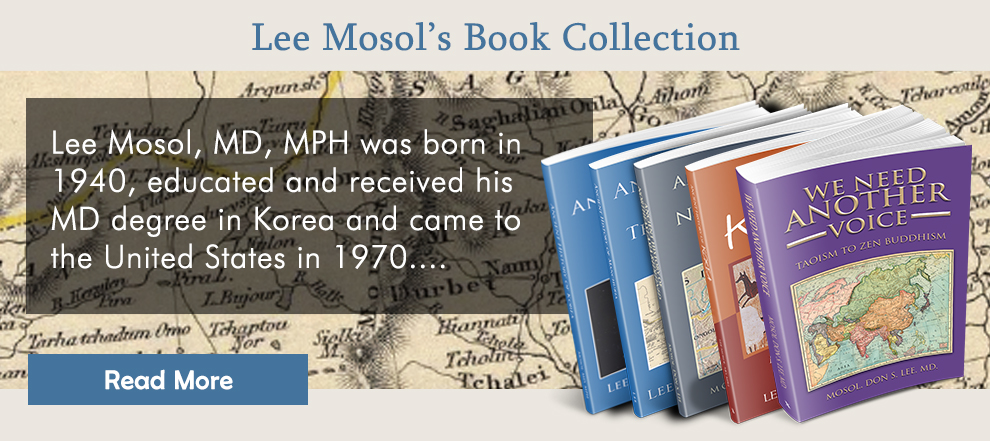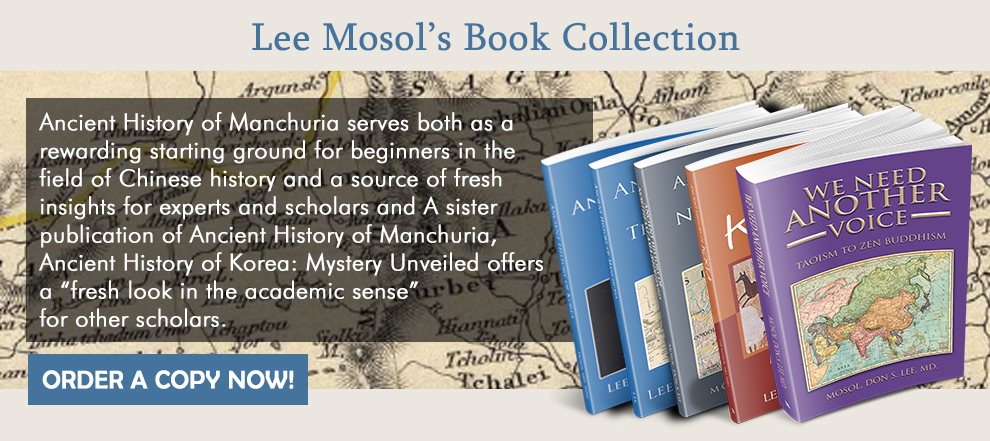The Queen Himiko (倭女王卑弥呼) was the Queen of Baekjae(百濟).
Abstract: Himiko(卑彌呼,Bimiho by Korean) was a shaman Queen of Baekjae (百濟) in Manchuria.
Chen Shou (陳壽 233-297) got the primary source from the locals in the Manchuria and compiled archaic form of Chinese character description is obscure, it is difficult to comprehend his text. Hence, scholars had been trying to outline the time and place where the event had been taken place.
Chen Shou used phonetic loan characters Wo (倭; wei wō wǒ ) and Ha(假;jiǎ jià xiá/gǎ. 하/ha by Korea) as noun adjective such as “假難升米, 倭難升米. 親魏倭王假, 校尉假” in front of the person’s names who came from the territory being described with phonetic loan character Wei. He also used the same characters with semantic means, thereby later scholars interpret the place as the Queen of Wo to the island nations in the Kyushu of Japan. The mystical Queen Himiko or Bimiho who had been granted as the Queen friendly(親魏倭王卑彌呼) to the Cao Wei (220–265). It is one example of academic fallacies based on misinterpretation of ancient Chinese scripture.
In fact, Bimiho (卑彌呼) was a shaman Queen of ancient kingdom of Baekjae (伯濟) in southern Manchuria along the Liaodong Bay. It is related to the wars between Goguryeo and Cao Wei. At that time King Sindae of Goguryeo (新大王 伯固:89–179, r. 165–179) who lived very long life, had three sones. The princes were the pawn of power struggle amongst the ruling classes of Goguryeo. China and Korea, and Japan in the NEA left different version on this event. It is related to the Continental Biryu Baekjae and Wo in the northern coastal region of the Sea of Hahn.
Presentation of evidences:
The story related with the Gate to the Sea is obscured and remained under the thick layer of fog. She sent her delegates along with POW after Gongsun Yuan was killed in 238.
Following are a Brief summary of many reasons behind on the proposed new theory.
Time and place to reject the old theory:
1. The name Himiko(卑彌呼, bēi mí hū by Beijing dialect, Bimiho by Korea) appears in the historical event took place in a year or two after the War load Gongsun Yuan (公孫淵) was captured in the Citadel of Yangpyong(襄平城) that was the vicinity of current Tianjin city .
2. The Queen of Wei send a special envoy to the Cao Wei court with 10 POW after Gongsun Yuan was demised. She sent thirty more POW few years later. The Cao Wei (曹魏) was delight.
3. Cao Wei dispatched Guanqiu Jian毋丘儉; ?- 255) who was called off. The second attempt lead by Sima Yi (司馬懿; 179 –251) was a joint effort with Goguryeo, Wuhuan (烏桓, 烏丸) and other northern tribes. They captured the Gongsun Yuan in 238.
4. Those two campaigns illustrated the location of the battlefield and Gongsun Yuan HQ around the current Tianjin vicinity .
5. After successful military campaign, one-time ally ended up as political nemesis. Goguryeo had been claiming the current Tianjin vicinity as their territory, invaded in 242 as did King Taejo before. King Micheon(, r. 300–331) did it against another descendants of Buyeo, the Murong clan (慕容)in Liaodong . The Capital of Joseon during the warring States period was around current Tianjin vicinity. The offspring of Buyeo (Joseon), three Hahn wanted to take it back and struggled.
6. Cao Wei dispatched Guanqiu Jian and invaded Goguryeo in 245 and 246. King Dongcheon of Goguryeo (r. 227–248) escaped to the southern part of Liaodong peninsula nearly Silla and survived the final assault. Since the ruined badly, Goguryo move the capital to Pyongyang .
7. Although the disgraceful defeat and lost the capital, he was highly admired king.
8. After the war, Goguryeo sent delegates to Silla court for their help. This event was recorded in the Tongjian : Silla was in the south of Goguryeo, after the Cao Wei army retreated, Goguryeo went back up. The remainders are the Silla people.
9. Goguryeo faced devastation by the Murong Xianbei people who attacked Goguryeo. Hwando was destroyed again by them in 341. King Gwanggaeto the Great was born there and finally reclaimed the Pyongyang and his son moved in to the ancient capital Pyongyang .
Bimiho was not a proper noun word.
10. The 8th King Adalla of Silla (阿達羅尼師今;?- 184 AD) met the Japanese Envoy dispatched by Bimiho (卑彌) of Japan on the year of 173 AD with gifts. All Three Kingdoms of Korea and Wei (Proto Japan) were Southern seashore of Manchuria till Goguryeo stood up the most powerful political entity. Other decendents of Three Hahn (三韓) had to moved down through the Hahn-Hae(瀚海). As a result, Silla moved her capital to South Eastern Corner of Korean peninsula ca. 500 AD.
11. The logogram “卑彌” is combination of PLCs and PSMCs. Bi/Pi(卑,빛) which is one of many PLCs referring “sun-ray, sun.” The logogram, Mi (彌; 弓:爾) is also combination of Bow (弓) and you or person nearby( 爾). The name is a PSMCs referring ancient priest also known as shaman/medicine man. As all the descendents of Old Joseon, Japan claims their leader as the Sun worshipping People.
12. Chen Shou also used the word Bimiho several times, to the women and man.
13. He also named one kingdom as the country of Bimi(卑彌國) under the section of Hahn along with Baekjae (伯濟) which is referring the first son .
14. The Queen Bimiho was the same (descendent of Buyeo)clan as of Gongson Yuan who demised by Zhongda Sama Yi (仲達 司馬懿:179 -251.宣帝) in the Citadel of Yangpyong, sent delegates to the Daifang (帶方) , and met the commanding general of Cao Wei. His son, Sima Zhao (文帝; 司馬昭:211- 265) appointed them as ministers. They kept sending delegates to the western Jin court . There were three others, namely Goguryeo, Silla and Gaya confederation around the shore.
15. Goguryeo attacked the northern fortress Linyuguan (臨渝關) in 598 as part of the Goguryeo-Sui Wars. The new emperor of Sui Emperor Wen (隋文帝; 541- 604), letter to the Goguryeo . It stated that conclave of Goguryeo people around the Shanghai region. The Book of Sui has more information about the Baekjae in the continent . The same place was called prefecture of Baekjae. As Sui attempted to attack the Goguryeo capital in southern Manchuria, Baekjae offered the sea route. But Sui thought the Baekjae could have second thought, hence turned down that offer. One of Sui battle ship was strained to the Jaeju. The ship was brought back through the Baekjae territory written.
Conclusion: Gongsun Yuan (公孫淵 , died 238) was captured by Sima Yi (司馬懿) in the Citadel of Yangpyong (襄平城) that was around the Tianjin vicinity. Bimiko (卑彌呼) was in the Jolbon Buyeo which was not far away from the Liaodong Bay. Both sea ports were controlled by the descendants from the Buyeo known as Baekjae and described as Wei in the east (東倭) and West(汗人, 倭). They commute through the waterway further down to through Korean peninsula to the Nine Provinces of Japanese archipelago and Okinawa isles. The mystical Queen of Wei Himiko (倭女王卑彌呼) was the Shaman of Baekjae.
End
비미호(倭女王卑彌呼)가 백제 여왕이란 확증:
진수는 필자가 백제 여왕이라고 결론을 내린 비미호(倭女王卑彌呼)에 관한 기록을 미묘하게 남겼다. 비미호가 “남자 포로 4명과 여자 포로 6명”을 바치니까 조위 황실은 칙소를 내렸다. 마땅히 실려야할 삼국지 위서 (魏書)명제기 ( 魏明帝曹叡: 206년-239년) 에는 왜(倭)자가 나타나지 않는다. 조위의 마지막이 되는 3대 제왕(曹魏 齊王 曹芳: 제위239년-254년)4년(244년)에 왜여왕이 봉헌 했다는 기록이 있다 . 공손연 세력을 소탕한 사마연의 아들이 서진의 초대 황제가 되였다. 진서에도 이 사건은 기록 되였다. 조위의 뒤를 이은 서진의 역사기록 진서 (晉書)에는 왜여왕이 중원 가까이 있었다는 증거가 뚜렸하다:
그러다 조위 말년(泰始初:265년)에 이르러서는 몇차례 통역관을 통해 조공을 바쳤다 .
첫쩨:왜인을 동이열전에 싣고, 부여국마한진한숙신씨왜인비리등 십국 (夫餘國馬韓辰韓肅慎氏倭人裨離等十國) 이라고 했다. 모두 열 나라라 했지만 여섯 나라 이름 뿐이고 부여국에 기록 했다. 만주에 있었다는 뜻이 숨어 있다.
두쩨: 더 뚜렸한 증거는 <선제(사마염)가 손씨를 정벌하니 그여왕(其女王)이 사신을 대방에 보내 조견 했다. 그후에는 공빙불절(其後貢聘不絕)하여 문제작상(文帝作相) 하여 수년에 이르렀다. 태시초(泰始初)에는 했다. 또 유사중역입공(遣使重譯入貢) 했다.
그 여왕이란 뜻은 공손씨가 웅거 했던 지역의 왕이라 뜻이다.
셋쩨: 그러한 공로로 조위에서는 혈통이 다른 왜왕을 제후 반열에 넣었다는 뜻이다. 그후 몇년은 두 왕실의 화친 관계가 유지 되였다가 . 왜여왕이 다스리던 한 분파가 발해만 연안에 있다가 멀리 멀리 떠나 갔다는 뜻이 분명 하다.
공손연 일당이 잡힌 곳이 양평이 천진항이 있는 발해만 일대다. 왜인전에 실린 여왕 비미호(女王卑彌呼)는 남만주 일대를 다스리던 백제 여왕이 분명 하다.
끝, 다음에 계속
June 8, 2017
About the Author
Written by Lee Mosol
Retired physician from GWU and Georgetown University in 2010 2011: First Book in Korean "뿌리를 찾아서, Searching for the Root" 2013: Ancient History of the Manchuria. Redefining the Past. 2015: Ancient History of Korea. Mystery Unveiled.
Recent Posts
Recent Comments
- Don S. Lee MD on 부여의 시말:
- Seowa etymologist on Silla from Zhina(Southern China) to Korean Peninsula.
- James Kim on 약우 (若愚)
- James Kim on 약우 (若愚)
- James Kim on 약우 (若愚)
Archives
- January 2025
- November 2024
- May 2024
- February 2024
- October 2023
- August 2023
- June 2023
- May 2023
- March 2023
- February 2023
- January 2023
- August 2022
- July 2022
- April 2022
- March 2022
- January 2022
- December 2021
- November 2021
- October 2021
- September 2021
- August 2021
- July 2021
- June 2021
- March 2021
- February 2021
- January 2021
- December 2020
- November 2020
- October 2020
- September 2020
- May 2020
- April 2020
- March 2020
- February 2020
- January 2020
- December 2019
- November 2019
- October 2019
- September 2019
- August 2019
- July 2019
- June 2019
- May 2019
- April 2019
- February 2019
- January 2019
- December 2018
- November 2018
- October 2018
- September 2018
- July 2018
- March 2018
- February 2018
- December 2017
- November 2017
- October 2017
- September 2017
- August 2017
- July 2017
- June 2017
- May 2017
- April 2017
- March 2017
- February 2017
- January 2017
- December 2016
- November 2016
- October 2016
- September 2016
- August 2016
- July 2016
- June 2016
- May 2016
- October 2015
- September 2015
- July 2015
- May 2015
- April 2015
- November 2014



